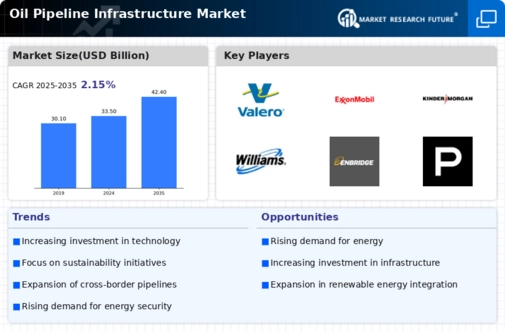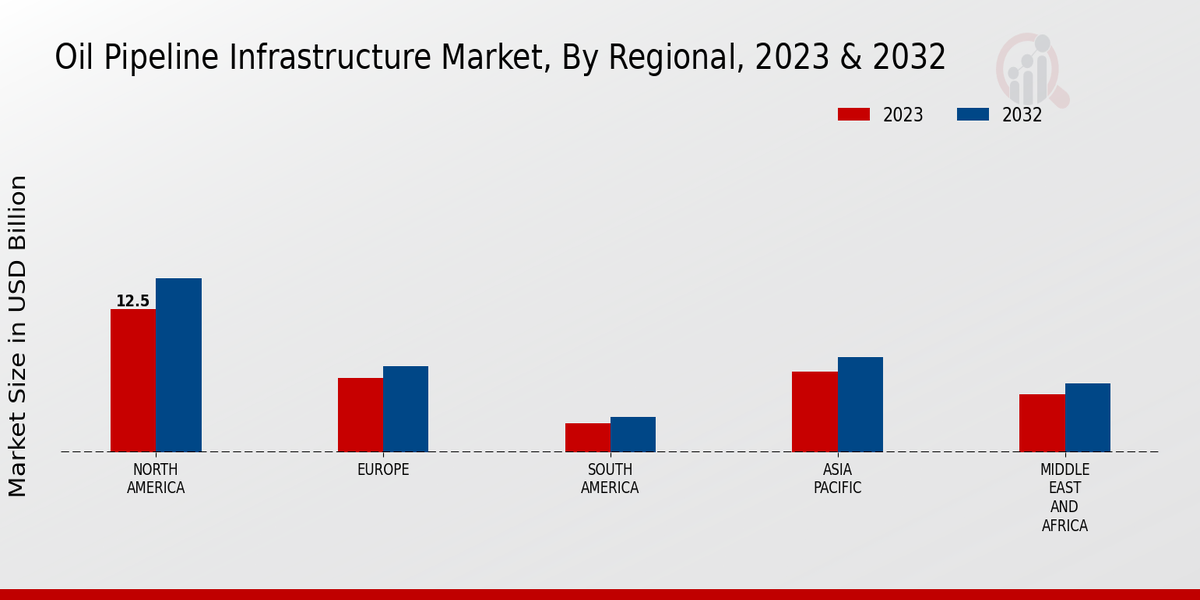Geopolitical Factors
Geopolitical dynamics play a crucial role in shaping the Global Oil Pipeline Infrastructure Market Industry. Political stability in oil-producing regions directly affects the security and reliability of pipeline operations. For instance, tensions in the Middle East can disrupt supply chains, leading to fluctuations in oil prices and impacting investment decisions. Additionally, countries are increasingly seeking to diversify their energy sources and routes to mitigate risks associated with geopolitical uncertainties. This trend may drive investments in new pipeline projects, as nations aim to secure their energy supplies and enhance energy independence, thereby influencing the overall market landscape.
Growing Energy Demand
The Global Oil Pipeline Infrastructure Market Industry is experiencing a surge in demand driven by the increasing global energy requirements. As economies expand, particularly in developing regions, the need for efficient transportation of crude oil and refined products becomes paramount. In 2024, the market is projected to reach 33.5 USD Billion, reflecting the urgency for enhanced pipeline networks. This growth is indicative of the broader energy landscape, where oil remains a critical component. The expansion of pipeline infrastructure is essential to meet this demand, ensuring that supply chains are robust and capable of supporting future energy needs.
Regulatory Frameworks
The Global Oil Pipeline Infrastructure Market Industry operates within a complex regulatory environment that influences investment and operational practices. Governments worldwide are implementing stricter regulations aimed at ensuring environmental protection and safety in pipeline construction and operation. Compliance with these regulations often necessitates significant investment in infrastructure upgrades and maintenance. As a result, companies are increasingly focusing on sustainable practices, which may lead to higher operational costs but ultimately enhance long-term viability. The regulatory landscape is expected to evolve, potentially impacting market dynamics and shaping future investment strategies in the oil pipeline sector.
Technological Advancements
Technological innovations are reshaping the Global Oil Pipeline Infrastructure Market Industry, enhancing efficiency and safety in pipeline operations. Advanced monitoring systems, such as smart sensors and automated control systems, are being integrated into pipeline management, reducing the risk of leaks and failures. These technologies not only improve operational efficiency but also contribute to environmental protection by minimizing spills. As the industry moves towards more sophisticated solutions, the market is expected to grow steadily, with a projected CAGR of 2.15% from 2025 to 2035. This trend underscores the importance of adopting cutting-edge technologies to maintain competitiveness in a rapidly evolving sector.
Market Trends and Projections
Investment in Renewable Energy Integration
The Global Oil Pipeline Infrastructure Market Industry is witnessing a shift towards integrating renewable energy sources into existing infrastructure. As countries commit to reducing carbon emissions, there is a growing emphasis on developing hybrid systems that can transport both oil and renewable energy. This transition may involve retrofitting existing pipelines or constructing new ones designed for multi-energy transport. The market is projected to evolve significantly, with estimates suggesting it could reach 42.4 USD Billion by 2035. This integration not only supports sustainability goals but also positions the industry to adapt to changing energy demands and consumer preferences.


















